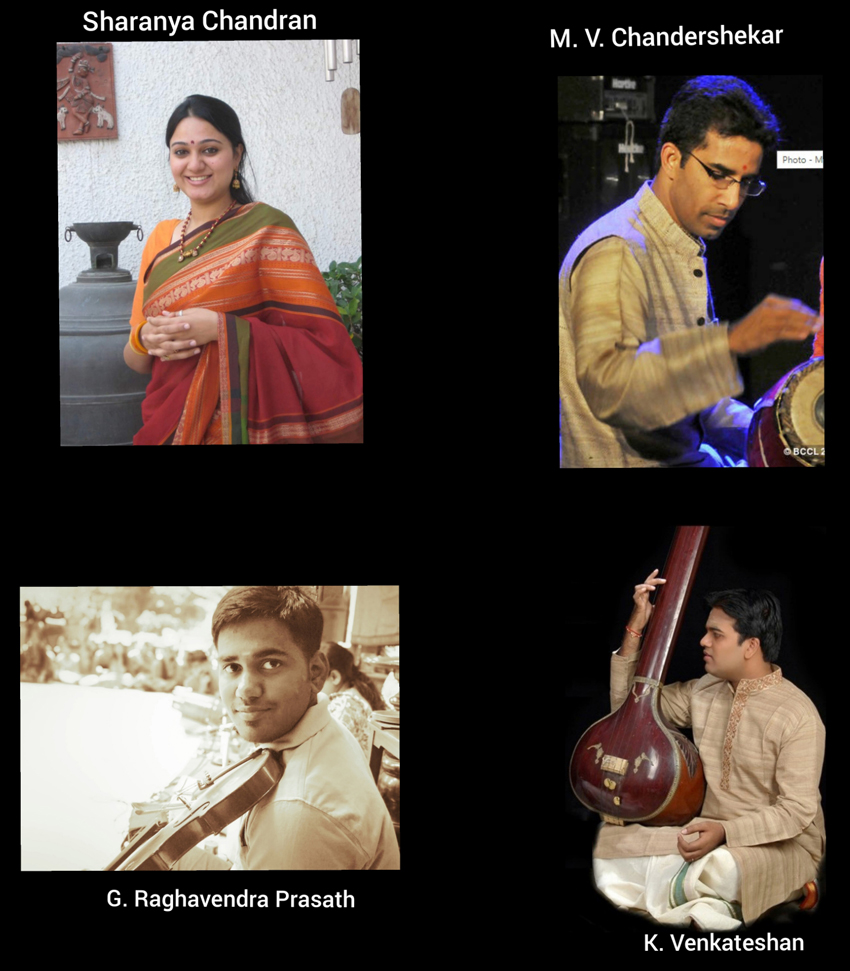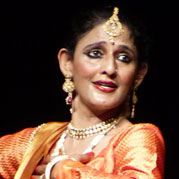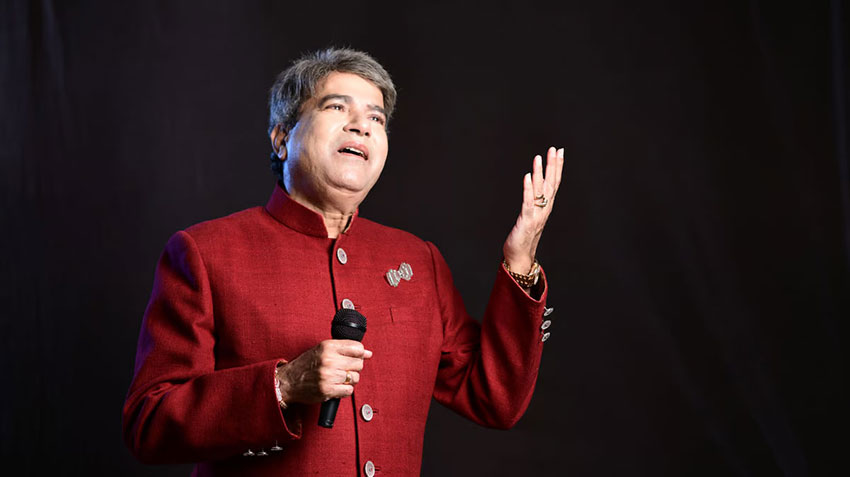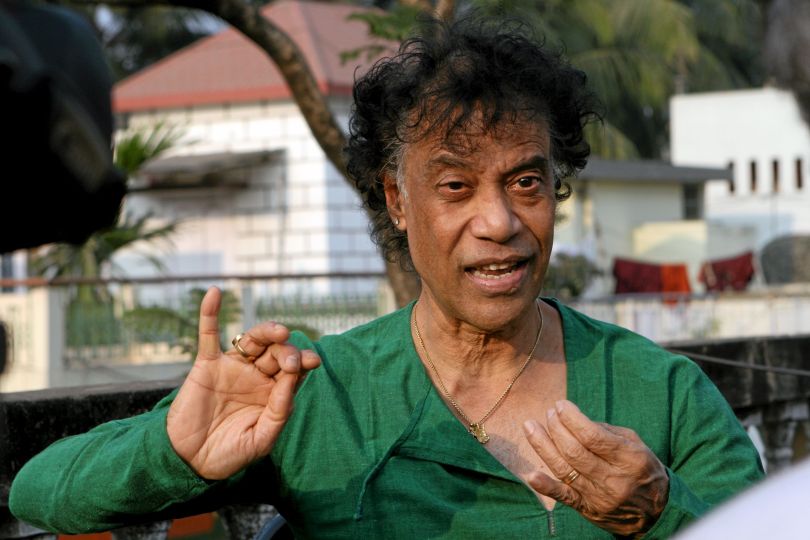The history of performance spaces of most Indian Classical dances is stereotyped as one from temple to court to stage. Amidst COVID-19 pandemic, the International Dance day 29th April 2020 will go down in the history of dance as a formal shift from the spaces of stage and classroom to the virtual world. Dance and dancers are re-positioning to survive and sustain themselves.
The author in interactions with Bharatanatyam exponent Ragini Chandrashekar and musicians explores the changeover. Beginning by first critiquing her legacy of dance from her Gurus; the article explores the manner Indian classical dance can re-position in the virtual world and examines the expected changes in dance pedagogy and performance.
Background of the Inheritance of Knowledge
Ragini Chandershekar learned Bharatanatyam from her mother Jamuna Krishnan, K.J. Govindarajan, K.N. Dakshinamoorthy Pillai, Kalanidhi Narayanan, and Usha Srinivasan. She trained in the science of rhythm with the genius Karaikudi Shivakumar and Carnatic Music with S.Gopalakrishnan, retired Chief Conductor of the All India Radio Orchestra.
Recreating inherited knowledge on Stage
Some months ago at the India International Centre, New Delhi, Ragini Chandershekar presented a homage to two master Karaikudi Shivakumar and her mother Jamuna Krishnan who passed away within a year.
The display of the legacy of their teaching can be illustrated by appraising the opening composition of her recital – Pushpanjali (offering of flowers). Composed in Raga, Nalin Kanti, the Pushpanjali was a complex commencement to a spectacular recital. “The essence of intricate musical piece was captured in the brilliant rhythmic cross patterning created by Shivakumar,” described vocalist, K. Venkateshan.
Shivkumar had organized the calculation (kannaku) in the pattern of 5 and 4 beat rhythmic designs. Each pattern or Jathis was centered on the mnemonic syllables (shollukattu) ‘Jham tha thajam jham tha’. The meandering spell of the design coordinated with the visuality of dance movements. In turn, these movements emulated the essence of the raga and performed the defined grace and beauty of the raga. Describes Ragini, “This skill of capturing the wandering flow of movements in music and recreating in mathematical audio painting was the forte of Shivkumar Sir. Manifested in energized practical and spoken discussions on music, body movements, and rhythmic patterning characterized his teachings.”
[adrotate group=”9″]
Processing the teaching as Performance on Stage
The dancer together with her spectacular team of accompanists metamorphosed Shivkumar’s legacy in the performance. The alchemy between the accompanists and the performer was scintillating. Leading the orchestra was dancer Sharanya Chandran who flawlessly performed her role of the nattuvangam. Sharanya described that the invigorating element of accompanying Ragini emerged from the performer’s prowess on rhythm balanced by the expressive component (abhinaya).
 The playing of cymbals and recitation of the rhythmic patterns by Sharanya was joined by the percussion play of M.V Chandrashekar. He moulded the flow of the adavus ( body movements) in the sounds of drum beats. The plaintive, lilting tone of the violin by G.Raghavendra Prasath aspired to sustain the inherent quintessence of devotion and humbleness. The singing of K. Venkateshan combined the dynamic nature of rhythm and the complex mellifluous quality of the composition.
The playing of cymbals and recitation of the rhythmic patterns by Sharanya was joined by the percussion play of M.V Chandrashekar. He moulded the flow of the adavus ( body movements) in the sounds of drum beats. The plaintive, lilting tone of the violin by G.Raghavendra Prasath aspired to sustain the inherent quintessence of devotion and humbleness. The singing of K. Venkateshan combined the dynamic nature of rhythm and the complex mellifluous quality of the composition.
Says Venkateshan, “Ragini is sure-footed and both her knowledge of rhythm and music allows her to improvise. Unlike several other dancers, she challenges the accompanists to participate in the processes of improvisation. She is particular about speed. During the entire performance, she leads by tapping her foot indicating and controlling the tempo. Simultaneously, Ragini ensures that we (the orchestra) remain alert to be in the journey of her performance.”
The subtlety of the Abhinaya in the Puspanjali
Seemingly a rhythmic wonder, the pushpanjali presented a subtle notion of abhinaya. There was an ephemeral wandering of bhava or emotive content. This was the legacy of Jamuna Krishnan an avid believer in Lord Krishna. The aroma of the offered falling flowers permeated in the graceful form of the dynamics of rhythm and dance movements.

That delicate lining of emotive content in the idea of the aroma of flowers offered reminded of a painting a decoded by the master art historian B.N. Goswamy.
The referred textile painting is a sacred Monsoon Pichwai. The Pichwais are ritual art in the worship of Krishna at the Nathdwara temple in Rajasthan. In the monsoon, the artist represents against a dark background the form of Krishna as a tree. Dr. Goswamy described “Look carefully and follow the design of the offered flowers by the Gopis. Next, when you join the line of the falling flowers you will see Krishna standing playing the flute!” Ragini’s performed pushpanjali was truly an expressive art of offerings flowers to the teachings of her Gurus! The essence of Jamuna Krishnan’s Krishna was created.
Ragini’s performance was bereft of any designer showmanship. It fulfilled the basic requirement of performing Indian arts that of submission and transforming the performance into a sacred offering.
Changing Paradigms in Space of the Virtual World
In the present, the challenge is adopting and adapting tools and techniques to reposition dance (both teaching and performance) in the virtual world. There is a need to arrive at a balance between re-inventing the dance in the new space and sustaining the intrinsic character of technique and content specific to a dance tradition.
The virtual world techniques of presenting dance teachings and performances are considerably different from the skills required in a classroom or the stage. Unlike the Western dance, the Indian dance incorporates the rich element of multilayered philosophical thoughts, facial expressions, and complexities of travelling energies that are personalized.
“Indeed, the virtual space allows for more intense and focused discussions in the teaching phenomenon. I am observing that there is greater listening, stillness, and thinking in the students. Shivkumar Sir’s and Jamuna Krishnan’s teaching were evolving processes. One began by exploring the outer seemingly mundane environment of a potential composition. This followed then with a journey in the labyrinth of thought and practice to develop a multilayered experience. The online space, in my opinion, has the potential to replenish the much required cerebral stillness and tap the in-depth dimensions of dance knowledge,” says Ragini.
[adrotate group=”9″]
The second factor relates to performance in the virtual space. In recent years, stage performances were characterized by
- Group performances
- Designer packaging of light, costumes, and three-dimensional stagecraft.
The virtual space has different dimensions. Space is more or less limited to the length and not to the breath. Says Ragini, “The processes of developing music, rhythm patterns, and body movements were centred on space. Now that the dimensions have changed it will be a challenge to evolve new techniques to address the teaching and performing of dance!”
Second, in the virtual space, the audience is much closer and focused on the performer. However, electrifying physical energy is absent. Third, many participating audiences may be accessing the performance on a small mobile screen. Compare this to the canvas a performer has when on a stage. The virtual experience of dance on a mobile screen can be comparable to delivering the creative process of miniature painting. A different kind of intimacy has to be understood. The sheer reduced scale dimensions of the space will perhaps be more about solo rather than group dancing.
However, the medium is still evolving and the online dance festivals are at a point where both the audiences and the performers are getting to know the dynamics of the virtual performance space.
Virtual Space-A Mirrored Hard Taskmaster
The virtual space seems to be a hard task-master. It is more of a mirror than a stage and a classroom. The mirror will want to see the teacher/performer’s hold on content and technique. It will be with minimal stagecraft packaging. It will need to be like a re-designed presentation of the essence of Ragini Chandrashekar’s pushpanjali, but the technique to incorporate the energy of musicians will need development.
[adrotate group=”9″]
This space is a mirror flat, concave, and convex. I am reminded of what a Turkish Sufi said, “If you see a shortcoming in the mirror accept it is yours, do not break the mirror but submit to the journey! A bee, after all, travels hundreds of flowers to create one drop of honey. The bee does not know what it creates and for whom it creates!”
Glossary:
- Abhinaya – expressional art
- Adavus – body movements
- Gopi – Cowherd lady a devotee of Lord Krishna
- Jathis – Rhythmic patterns
- Kannat- calculation
- Lasyam – Grace
- Parampara – flowing tradition of heritage
- Pichwai – Sacred textile painting linked with Krishna worship
- Pushpanjali Shollukattu – rhythmic syllables
- Varsh Ritu Pichwai – In the tradition of Krishna worship this textile sacred painting illustrates the rainy season. The background is dark, and Krishna is shown as a tree.










